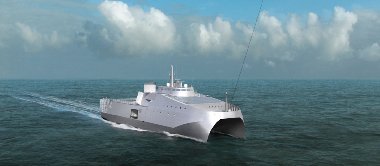Avendaño Avila, Renata (2021) Identification of HPC PSA support studies PFE - Projet de fin d'études, ENSTA.
Fichier(s) associé(s) à ce document :
| PDF 1576Kb |
Résumé
In the context of Hinkley Point C (HPC), a new EPR in construction, this internship focuses on its probabilistic safety assessment. Being a twin unit expected to cover 7% of UK’s electricity, a single reactor is designed to have a power of 4500 MWth equivalent to 1600 MWel. The probabilistic safety assessment for HPC aims at providing probabilistic calculations complementing the design and operation of the plant as well as supporting the safety demonstration. In fact, the design and its modifications along the project have a direct impact on the mitigation of accidental transients taken into account, consequently the risk associated has to be considered. There are 3 PSA levels: - PSA level 1 estimates the overall risk of fuel damage so it englobes the reactor building as well as the fuel building. The result is given in terms of fuel damage frequency (FDF), per reactor and per year. This level is within the scope of my internship; - PSA level 2 is based on PSA level 1 and focuses on the containment and the probability of radioactive releases into the environment; - PSA level 3 analyses the consequences of PSA level 2 at an individual and societal off-site In a PSA level 1 context, the aim is to calculate the overall fuel damage frequency and thus the intermediate step requires the fuel damage frequency per accidental family characterized by the consecutive failure of the missions (systems, I&C, human action). In order to achieve this, time limits for human missions (grace periods to start a system for example) and minimal material requirements (the number of safety injection trains for example) are determined to mark the missions’ failure so its associated probability can be calculated. These requirements are provided by thermohydraulic or neutronic studies used in both probabilistic and deterministic approaches. They are called support studies. For PSA, such studies define the grace periods associated with human factor mission or recapitulate the minimal material requirements for systems missions. Probabilistic studies use the “best estimate approach” which consists in results as close to reality as possible, with less conservatisms than the deterministic demonstration. An invalid or obsolete support study can lead to incorrect results in the PSA model so a control of said studies must be done regularly. The HPC PSA model consists, according to IAEA [17], to using a logical and systematic approach that makes use of realistic assessments of the performance of the equipment and plant personnel as a basis for the calculations modelled by a network of event trees and fault trees. Accordingly, the general objective of the internship is to update the report “Identification of HPC PSA support studies” which enlists a large part of support studies used for Hinkley Point C project and shows 10 of the most significant HF missions in terms of their weight in the PSA model to identify the most important ones. At the beginning of the project, HPC’s grace periods and requirements used in the first versions of HPC PSA model were based on Flamanville 3 support studies due to the closeness of both designs. In this newest update, more and more Flamanville 3 studies will be replaced by specific HPC deterministic studies and new studies will be added as well. The HF missions’ sensitivity calculation will be also reassessed. This study will allow to determine if new support studies need to be produced since the workload for a single support study is around 100 to 500 hours.
| Type de document: | Rapport ou mémoire (PFE - Projet de fin d'études) |
|---|---|
| Sujets: | Sciences de la terre et génie de l'environnement |
| Code ID : | 8740 |
| Déposé par : | Renata AVENDANO AVILA |
| Déposé le : | 12 oct. 2021 12:20 |
| Dernière modification: | 12 oct. 2021 12:20 |








